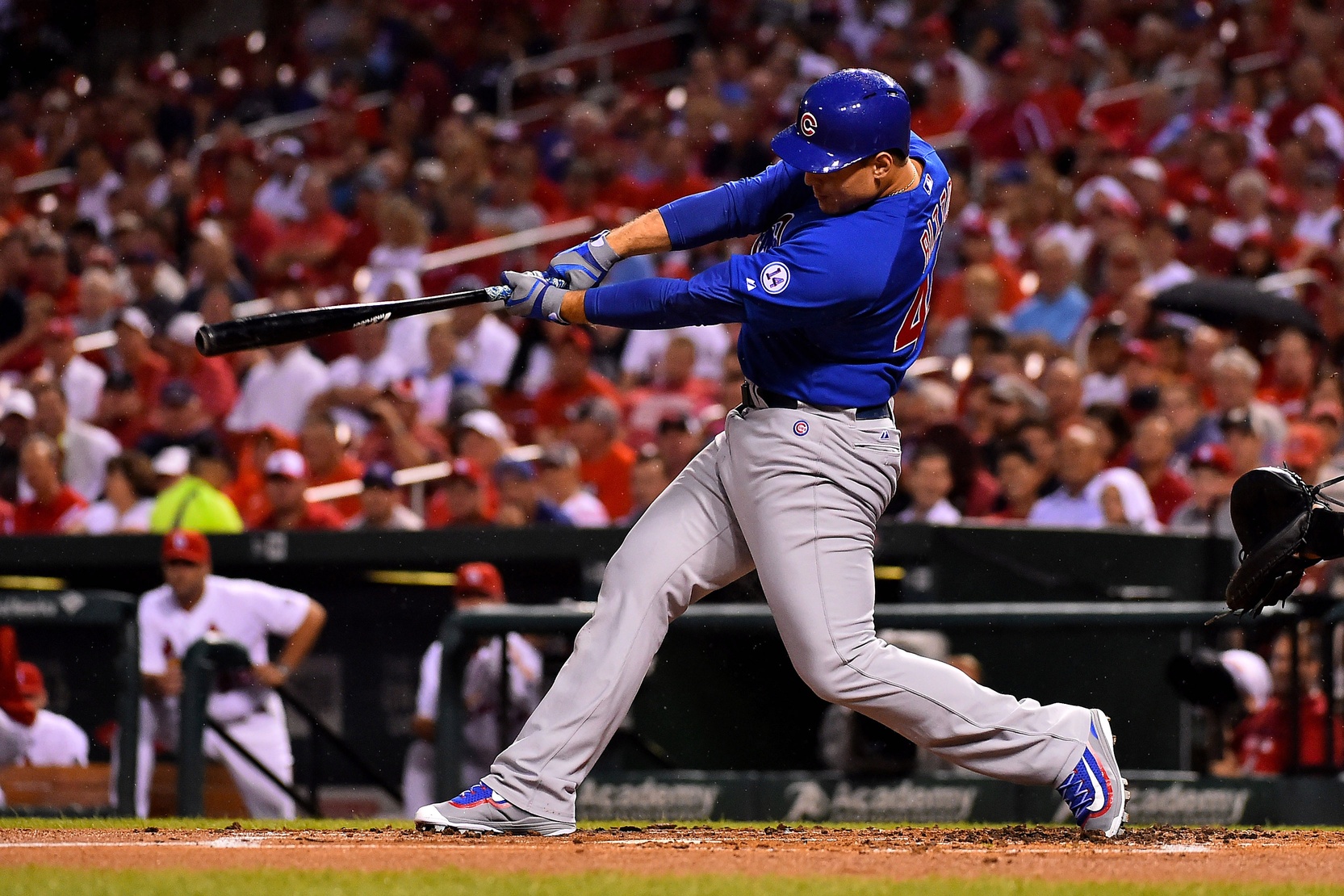Earlier this week, fellow BP Wrigleyville writer Matt Trueblood and I had a fun conversation on Twitter regarding Anthony Rizzo’s true hitting prowess versus left-handers. The crux of our “argument” rested in my belief that Rizzo can continue to hit lefties as well as he has this season, while Matt casts a bit of side-eye due to the small sample of plate appearances and the overwhelming probability of regression.
The predominant discourse on Rizzo’s breakout 2014-2015 praises his improvements in batting stance, strikeout rate, and lefty/righty splits, but Matt is rightfully skeptical of the latter. Even the best players have platoon splits, and Rizzo’s exceptional performance against lefties in 2015 is in a mere 170 plate appearances, so it would not be unusual for Rizzo to regress. I’m more open than Matt to the idea that Rizzo has effected some real changes in approach versus lefties that have produced better results, so I thought it would be fun to dig into some numbers and see if we can draw any conclusions.
My working hypothesis is that Rizzo has combined an altered hitting approach with mechanical changes, so we’ll look at how lefties have pitched Rizzo, which of those pitches he’s been swinging at, how he’s performed against those pitches, and finally, how he’s changed his batting stance.
This season, Rizzo’s put up a .307/.418/.493 line against southpaws, including six home runs. To contrast, he’s at .276/.382/.552 against opposite handed pitching this season. His lower slugging and higher average versus lefties has resulted in a 90 point deficit in ISO against lefties. That slash against lefties is buoyed by a .343 BABIP, considerably higher than his .272 mark against right-handers, a significant difference that we’ll have to explore further. Finally, his strikeout and walk percentages are at 16.5 percent and 10.6 percent against lefties, 14.3 and 11.5 against righties, all incredibly good marks that put him in the upper echelon of hitters.
So, Rizzo’s hit for a bit less power against same-handed pitchers, but a slightly higher average and OBP, not an entirely shocking development. Part of this is probably due to the way lefties have attacked him, pitching him almost exclusively low and away. Here’s his 2014 and 2015 raw pitches seen versus lefties.
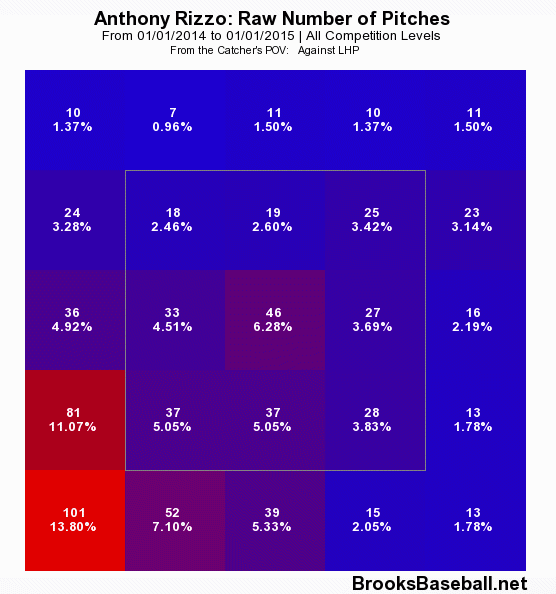
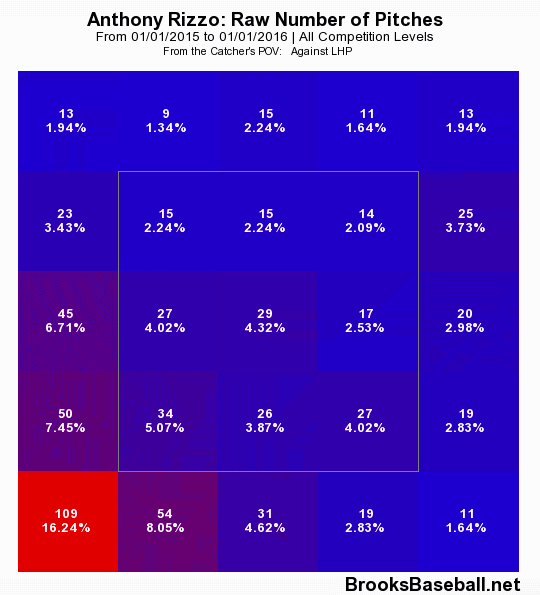
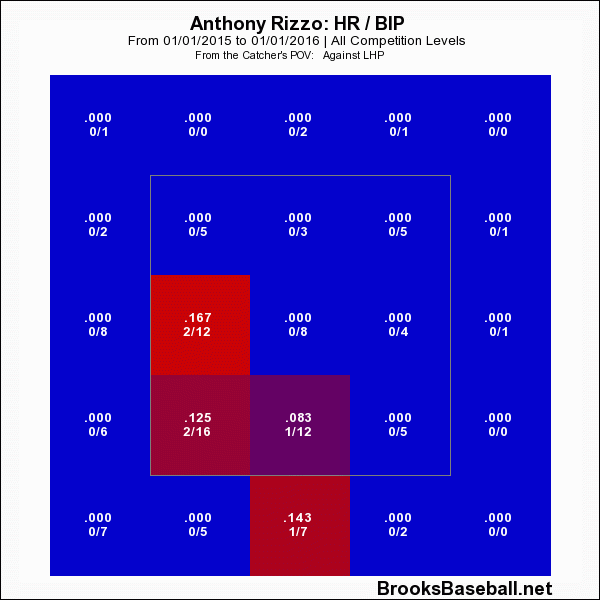
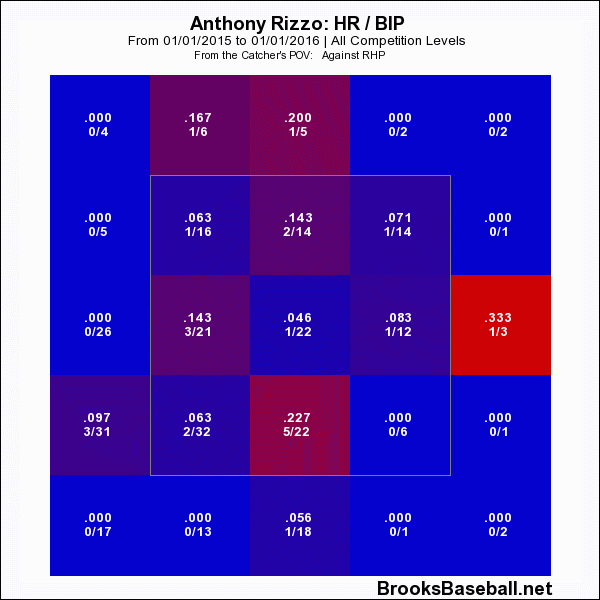
Here’s a homer Rizzo hit off of long-tenured St. Louis lefty Randy Choate.
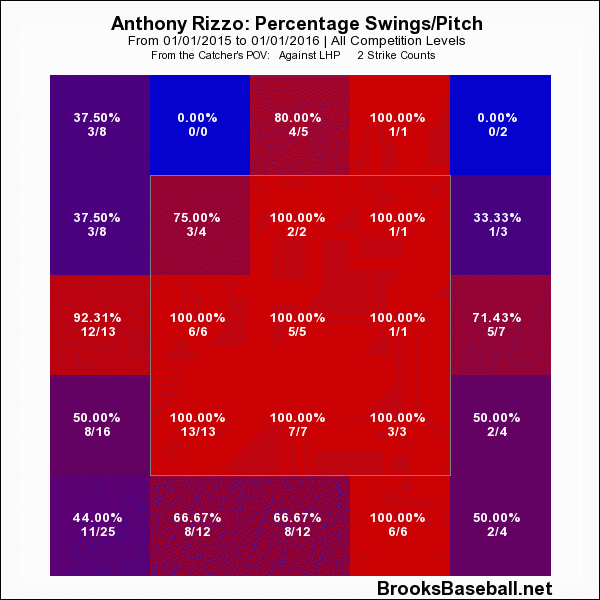
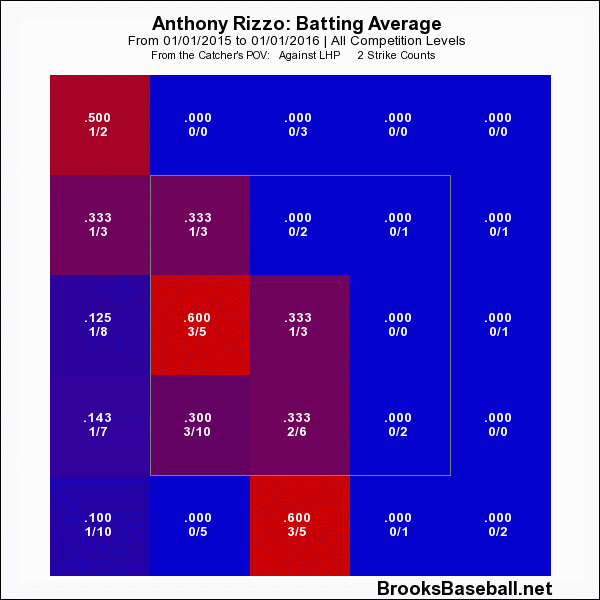
As for his mechanics, Rizzo has changed quite radically since his first full MLB season in 2013. This Sports on Earth piece does a good job of demonstrating visually how Rizzo has creeped closer to the plate and back in the box, leading to not only the hit by pitches that are the focal point of that piece, but to better plate coverage. Rizzo can now reach the outer half and beyond and hit those pitches with greater authority, a key factor in his new success against lefties. To counteract, pitchers—especially lefties—have moved farther and farther away, resulting in the first two visuals up top. To illustrate, compare Rizzo’s batting average with two strikes against lefties from 2013 to his 2015 above:
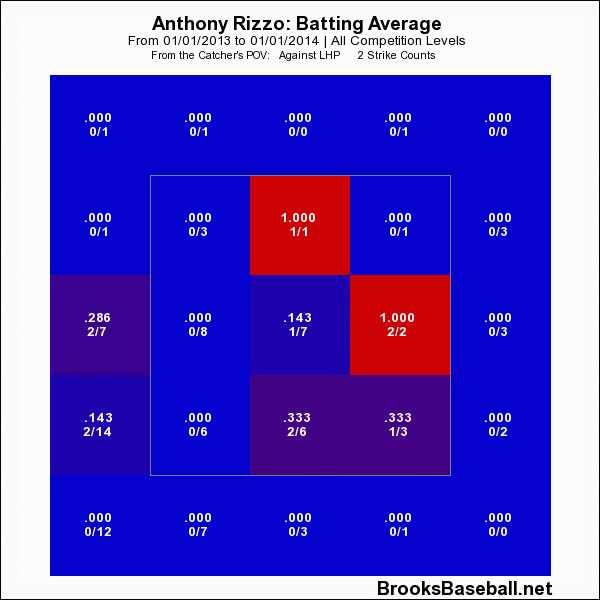
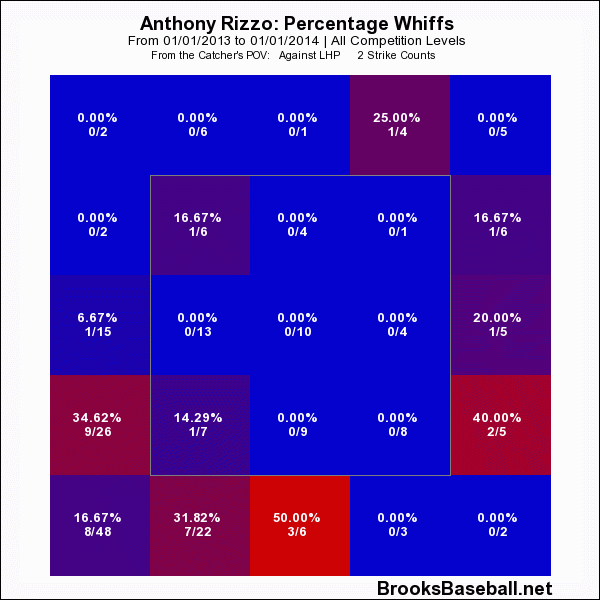
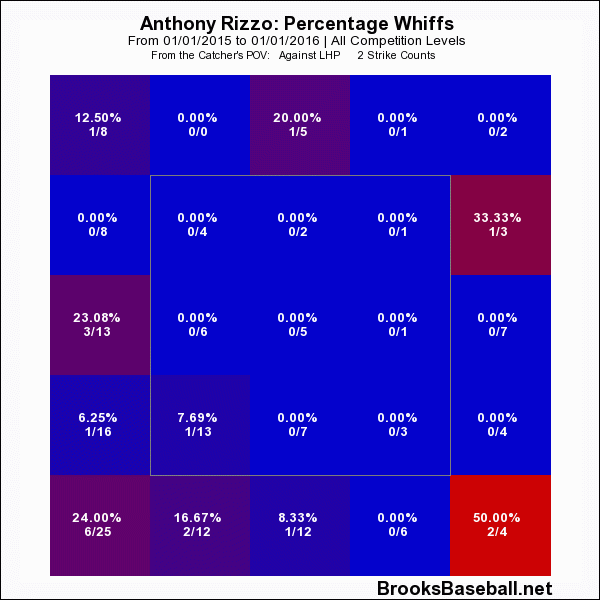
Rizzo’s decline in strikeouts this year and his success versus lefties don’t appear to be flukes, even in these small samples, due to his real approach and batting stance changes. Rizzo has gone from a rather abysmal .189/.282/.342 line versus lefties in 2013 (replete with a 20.4 percent strikeout rate!), to .300/.421/.507 last season, to .307/.418/.493 this year. He’s totaled 341 plate appearances against lefties the past two years, and he’ll be facing some tough left-handers down the stretch—Francisco Liriano, I’m looking at you—so he’ll even have a chance to prove himself in high-leverage situations, a feat that the league’s leading hitter in WPA is more than capable of accomplishing. By focusing on contact with two strikes, Rizzo should help prevent the big strikeouts that can plague a team like the Cubs heading into the playoffs when facing big-time arms. Rizzo is an intelligent hitter who has made some serious adjustments, and his success against lefties should continue.
Lead photo courtesy of Jasen Vinlove-USA TODAY Sports
